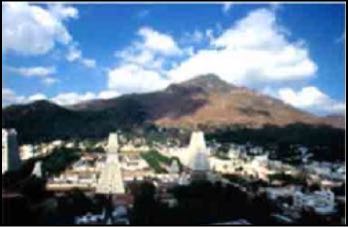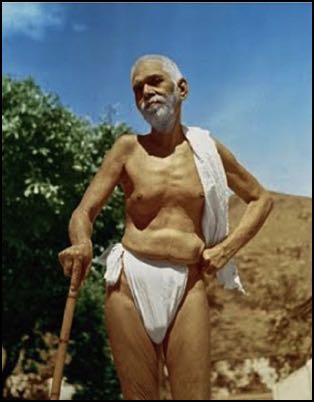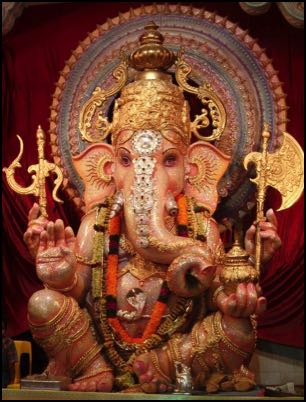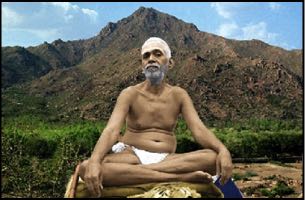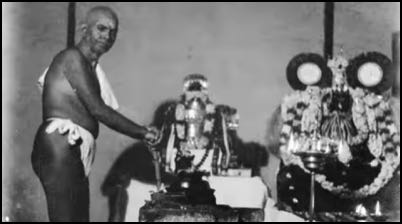
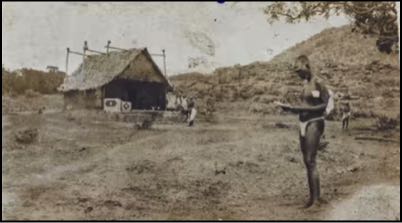
Free
eBooks
Spiritual-Teaching.org
Recently I was in a car accident of my own making. While driving down a steep,
narrow road with a steep drop on one side, I foolishly tried to clip on my seat belt and in a second’s momentary lapse the steering wheel veered left and the car immediately plunged over the side of a culvert at the base. I opened the door and found the car raised a foot off the ground on the right side. Gingerly stepping out I went to the front of the car and discovered that the front left wheel was hanging in mid-air.
The passenger in the front left side of the car could not get out on that side
as immediately below was a drop of six odd feet. We thought the car could topple
over at any moment. Luckily, the passenger managed to climb over the gearshift,
squeezed past the driving wheel and exited the car on the right side.
Still stunned by the speed of what had happened I had no idea how to retrieve the
car from this precarious position. Luckily a taxi driver was driving past, saw the
predicament and stopped to help. Others who witnessed the accident soon
congregated around the car. The taxi driver assessed the situation and commanded
some six assorted strangers to step onto the right-side footboard, which adjusted the
vehicle so that now both right-side wheels were on the ground. He then confidently
sat in the driver’s seat, started the engine, put the car in reverse and managed to get
the front left wheel squarely back on the road. My relief was overwhelming. All this
time I was in a state of agitation. The unease was crushing. Though I tried to
maintain a cool demeanour, comments by observers later said I didn’t succeed!
From being confident and in charge of events to a state of severe anxiety was swift
and dramatic. Later, on reflection, I wondered after so many years of meditation and
spiritual practices how I could be reduced in a second to a quivering, helpless idiot.
The feeling of relief brought with it a sharp realisation that chaos is never far away no
matter how well we guard against it with mental and emotional prophylactics. The
accident could have been far, far worse. Was Life trying to tell me something? I think
so and took the accident as a warning to be more attentive and not to take things for
granted. The crash made me realise how fearful I am. Underneath the calm exterior
is another realm. We presume we know who we are, but really we do not. There are
layers and layers of dormant feeling and thought which can spring to the surface
without warning when triggered by an intense incident. There are times when
mentally or emotionally we grimly hold on with our scrunched fingers until the crisis
passes. It is the nature of a human being. Any ideas that we are superhuman and
are above normal human reactions are laughable. Whether we are conscious of it or
not, we spend our entire lives trying to be safe and secure according to our
parameters.
I recall an incident in a book about Korean Zen Buddhism. There was a renowned
woman Zen monk who was considered a master. In her former life as a householder
she was a mother. Later in her vocation as a monk, her daughter died and she was
reduced in her grief to incessant tears. The period of mourning went on for quite
some time. Students and lay people alike were puzzled and she was asked why,
since she was considered a deep practitioner of Zen, could she indulge in such
unseemly behaviour. I do not remember exactly her response (admittedly an English
translation) but it was something along the lines of “You do not know what you are
asking. Let me be.” I was perplexed by this anecdote for years afterwards and it was
only gradually that I began to see that my understanding of what ‘enlightenment’
meant was wrong. There is no surefire solution to our predicament as human beings.
We are who we are, warts and all. We are both strong and weak, we are both wise
and foolish. We are both sensitive and obtuse. We are all things to all mankind. Our
strengths and weaknesses are universal. 1 What we can do that can make a
difference is the power of reflection. Of turning back on ourselves to see the root of
our behaviour and to be able to ask that supreme question, why?
There are two principal impulses in us all. Desire and fear. Positive and negative
compulsions. Both are necessary if we are to function as human beings. Desire is
necessary to feed and shelter ourselves and give our physical, emotional and mental
bodies the comforts necessary for it to sustain a life span of some significance. Fear
is necessary to warn us of danger so we can take appropriate precautions. We are
hardwired and any tinkering with this finely tuned mechanism is fraught with grave
danger. It can cause mental and emotional instability. There is a balance between
the desire and fear in us much like the dynamics of a see-saw in a playground. You
cannot have one without the other.
Sri Ramana Maharshi’s path of self-enquiry is meant to see, examine and purify our
thought processes. This process is not to be confused with the necessary
mechanical thoughts, say, “I am hungry. I need to eat.” Many of the thoughts that
erupt into our consciousness are noise in our brains and do not require much
attention. It is the brain automatically doing what it is meant to do for the
maintenance of the human body and mind. Think of the dream state. We are aware
of the range of bustle in our brains when we are suddenly awoken from sleep. The
brain is alive with electromagnetic activity of which we have little inkling.
What concerns us are the genetic and acquired thought patterns which destabilise
the harmony of our body, heart and mind. They disrupt our clear vision and twist our
responses into a concatenation of unruly, undesirable, unconscious reactions with
little intelligence or empathy. Sri Ramana has stated time and again that we are
already realised (jivanmukta), the problem is that we think we are not. And the
reason for this is that our consciousness is clouded by ignorance. The whole
purpose of our sojourn on this earth is to purify ourselves of the wrong views and
attitudes we clasp tight as if we would not exist without them.
Returning to the dilemma of fearlessness. We would all love to be fearless and we
admire those heroes and heroines who demonstrate it. That is why we enjoy epics,
novels, dramas and films for they show us generally how the hero or heroine
overcomes a seemingly impossible complication.
Except on rare occasions when we rise to the challenge we are not usually
confronted with a dramatic task, and strangely we are not meant to be continually
fearless in the normal course of events. For to do so could be to walk around like a
medieval knight in metal armour, rigid and unfeeling. Fear aids us in revealing what
is below the surface of our psyche, our ocean of dreams. A brave soldier who
prepares to face the enemy is not fearless, for he or she to be a hero is to say that
they contend with their inner demons and surmount the paralysis fear inevitably
brings.
Then what did I learn from the recent accident? Well, first to pay attention (!) and
second, appreciate others who can offer help in whatever form when genuinely
required for we all are humans who feel and sympathise with others, and third, never
forget that “to err is human, to forgive, divine.” 2
For to recognise one’s own weakness, one’s fear, is to find release from the shackles
of the unrealistic expectations one has of oneself.
__________________________
1 Well may we say with Shylock in The Merchant of Venice, “If you prick us, do we not bleed? If you tickle us, do we not laugh? If you poison us, do we not die? And if you wrong us, shall we not revenge?”
2 Alexander Pope, An Essay on Criticism, Book One.
Letter # 21 - The Question of Fear
